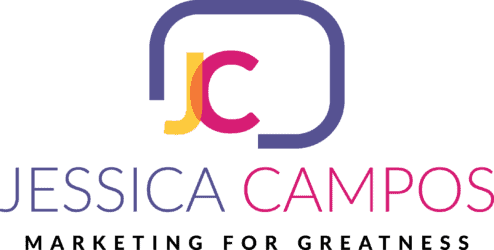Best Pricing Strategy For Services
This week I’ve been hosting Entrepreneurs’ Inner Circle Roundtable Strategy Calls and we discussed the topic of revenue models. Most entrepreneurs asked the same question: how to charge for my time? My answer was $0 since the best pricing strategy for services doesn’t include hourly rates.
Why selling hours to your clients is a bad idea
The main problem with hourly pricing is cash flow. Hourly pricing is unpredictable because you don’t know exactly how much you’re going to get paid until you complete the work. Unless you’re very familiar with your process and industry you could underestimate your potential income.
Before I opened my media agency, I used to sell physical products and before that, I practiced as an attorney. I thought I could run my media agency as a freelancer, just selling my hours. I realized very quickly what a mistake that was.
My revenue was all over the place!
Some months were glorious and other months were a disaster. It was literally a roller coaster. The good news? I figured out how to end with the roller coaster and get predictable cash flow. It was all about understanding psychology pricing.
Instead of charging by the number of hours I worked, I created several packages and adopted a premium pricing model. This strategy transformed my business, so I want to share the steps that I took to solve the problem of unpredictable cash flow with you.
I have also prepared a template that will save you months of work!
My first warning: please, don’t get trapped with the dollar figure. It’s just the revenue which could be very far from profits. During my last 15 years as an entrepreneur, I’ve seen months of over $100,000 and months of -$30,000. I have learned that what really matters is that you meet your profit goal for the quarter or even yearly in some cases, depending on your business model.
My business story was featured at the Mindset Retreat hosted by my favorite mentor Fabienne Fredrickson. Watch this video!
I teach service based entrepreneurs how to go from unpredictable cash flows to consistent monthly revenue (this is what you want)
Hourly pricing is pretty self-explanatory: It’s what you charge for your services based on an hourly rate. You have a flat price that you charge per hour. However long it takes you to do your work for someone, you multiply the number of hours completed by your hourly rate. The final number is what you bill.
When you’re starting your business, hourly pricing is, perhaps, the easiest way to get clients, since you’re not asking them for a significant transaction amount.
I’ve seen service-based professionals offering 1 hour at $75-$100. I get it! It’s easier to ask for $75 than asking for $3,500. But at the end of the day, if you’re not generating enough monthly revenue to pay your bills, you simply can’t run a business this way.
People buy from you, not because they woke up that morning thinking about your services. They are thinking about their own problem. They hire you because they feel that you have the solution that best fits them at that moment.
Package Pricing is when you bundle several services together and sell them at a set price. They are awesome! But keep in mind, you need to do some mindset work in order to become confident and competent to ask for a much higher transaction value.
I’m the first to admit here, it is “SCARY”, but once you experience your first “YES” to the first big amount, you will be ready for more!
If you read my article about the Business Model Canvas, you will find some of this information familiar.
6 Steps To Create Your Packages
Step 1: Define Your Unique Value Proposition
Why did you start your business?
What makes you stand out from your competitors?
What benefits do people experience after working with you?
Your unique value proposition should be represented across your marketing materials. Examples: showcase video, testimonials, social media, blog posts, etc. If you don’t feel like you have one, pick up the phone and ask one of your clients why they hired you and what they like the most about working with you. 😀 It’s not complicated at all!
Step 2: The Buyer Persona
Once you are clear about your unique value proposition, the next step is to think about the buyer persona. Some people call them “avatars”. Who are those clients that you truly enjoyed working with? Let me give you some examples:
- Those that pay on time
- Influencers
- Responsible
- Coachable
- Open minded
- Happy
- Flexible
- They know what they want
- They take action
- Grateful
- Respectful
- They know your boundaries
- High work ethic
- Their values are compatible with yours
- Etc…
Spend time thinking about the buyer persona as much as you can. If you already have clients, you might want to make a list of your top 5. Think about what their needs were when they hired you. Ask them what you have done for them. This will help you to go to the next step.
Step 3: Your Solutions
Once you are clear about your unique value proposition and the buyer persona, the next step is creating a list of the solutions that you provide for your clients. People buy things that can help them make money, save money, save time, save effort… Think about those main activators and include them in your copy.
- Get clarity
- Get rid of anxiety
- Grow your business faster
- Increase your conversions by __%
- Accountability
Step 4: Your Competitors
It’s always good to look at your competitors.
- What are they offering?
- How do they market their product?
- What benefits are they featuring?
Do not copy their offer! This could represent several thousands of dollars in losses for you. You want to stay true to your value and instead, add more value to stand out from the crowd.
Step 5: Create a Package for Each Buyer Persona
Your ideal client will have 3 different “personas”. Think about 3 levels where people can be.
Let’s run an example considering that I am helping a business coach to create their package.
Persona 1: Corporate employees that want to transition to entrepreneurship
Persona 2: Entrepreneurs that are growing their first $100,000
Persona 3: Entrepreneurs that are looking to multiply their growth and expand
For each “persona” you will create a package with all the solutions that they need to produce a transformation. You are the expert. In this example, a mindset coach knows that repetition makes a big difference, to establish habits. The minimum time that they should spend together is at least 6 months, to create an impactful transformation. I actually would consider a 12-month program that creates a total transformation.
Don’t feel like you have to come up with a perfect avatar. Be flexible. Launch your packages and be open to change them as you test your business model.
When I first did this exercise, I found 3 personas. Then, when I tested my business model, I found that I could benefit another group of people, so I created the entry-level program that incorporates group coaching. I also found that I could create another category for those who didn’t want to learn but instead, they wanted their work done. That’s why we have the “Done For You” programs. My changes came after I tested my business model.
Recommended article: 3 Weird Sales Strategies That Produce Guaranteed Clients
Step 6: Marketing & Sales
While most entrepreneurs create their packages, they struggle with marketing and sales. They only think about offers and tactics, instead of adopting a full approach of their business model. In other words, they don’t complete their business model. A business model encompasses your product, your offer, your marketing tactics, and your sales systems.
Packaging your offer and pricing your services can be challenging, especially if you are starting to grow your practice and have no framework to reference. No worries … I have prepared a template that will help you to create your packages and prices, to generate $10,000, $20,000 and $30,000 a month.
Get A Free Forensic Marketing Session with me. I would like to know more about your business and your revenue model. Take the first step and complete this Assessment Form.
Was this article helpful to open your mind to create a different business model? Share the love!
To your success,
Jessica

